Volume 12, Issue 3_4
Displaying 1-12 of 12 articles from this issue
- |<
- <
- 1
- >
- >|
-
Article type: Article
1999Volume 12Issue 3_4 Pages 110-111
Published: May 15, 1999
Released on J-STAGE: December 29, 2017
Download PDF (255K) -
Article type: Article
1999Volume 12Issue 3_4 Pages 112-115
Published: May 15, 1999
Released on J-STAGE: December 29, 2017
Download PDF (655K) -
Article type: Article
1999Volume 12Issue 3_4 Pages 116-121
Published: May 15, 1999
Released on J-STAGE: December 29, 2017
Download PDF (832K) -
Article type: Article
1999Volume 12Issue 3_4 Pages 122-126
Published: May 15, 1999
Released on J-STAGE: December 29, 2017
Download PDF (609K) -
Article type: Article
1999Volume 12Issue 3_4 Pages 127-134
Published: May 15, 1999
Released on J-STAGE: December 29, 2017
Download PDF (1390K) -
Article type: Article
1999Volume 12Issue 3_4 Pages 135-162
Published: May 15, 1999
Released on J-STAGE: December 29, 2017
Download PDF (2625K) -
Article type: Article
1999Volume 12Issue 3_4 Pages 163-164
Published: May 15, 1999
Released on J-STAGE: December 29, 2017
Download PDF (428K) -
Article type: Bibliography
1999Volume 12Issue 3_4 Pages 165-167
Published: May 15, 1999
Released on J-STAGE: December 29, 2017
Download PDF (205K) -
Article type: Article
1999Volume 12Issue 3_4 Pages 169-192
Published: May 15, 1999
Released on J-STAGE: December 29, 2017
Download PDF (2204K) -
Article type: Article
1999Volume 12Issue 3_4 Pages 193-205
Published: May 15, 1999
Released on J-STAGE: December 29, 2017
Download PDF (1582K) -
Article type: Article
1999Volume 12Issue 3_4 Pages 206-218
Published: May 15, 1999
Released on J-STAGE: December 29, 2017
Download PDF (1087K) -
Article type: Article
1999Volume 12Issue 3_4 Pages 219-222
Published: May 15, 1999
Released on J-STAGE: December 29, 2017
Download PDF (611K)
- |<
- <
- 1
- >
- >|
